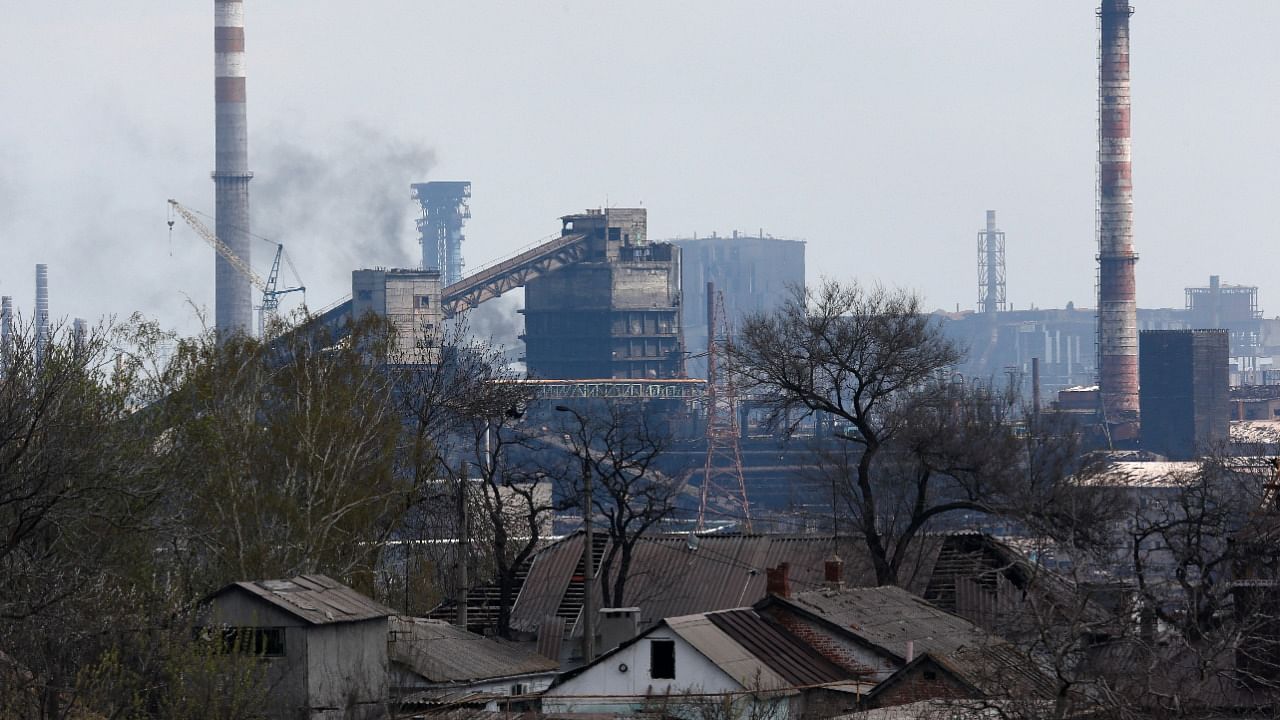
Russian commanders said on Tuesday that they were beginning their assault on the Azovstal steel plant, where the remaining Ukrainian soldiers defending the besieged port city have been joined by 1,000 or more civilians, Ukrainian officials said. The Russians launched a new round of artillery barrages and issued the latest in a series of ultimatums to the fighters in the factory to surrender.
Why is the Azovstal plant important?
The plant was first established by the Soviet Union in the 1930s and rebuilt after World War II. It is a labyrinth of rail systems, workshops, blast furnaces and warehouses, with many of the buildings made of thick concrete and designed to withstand high temperatures.
The plant stretches across 4 square miles, a complex of buildings, smokestacks, blast furnaces and stacks of coiled and plate steel, and it has its own port facilities on the Sea of Azov. One of the largest metal mills in Europe, it produced about 4.3 million tons of steel annually before the Russian invasion, with most of it sent by ship to European customers.
The network of underground passages and rooms, which is now pivotal to the survival of the holed-up soldiers and civilians, was originally built to transport equipment among buildings and to access the undersides of ground-level machinery for maintenance, There was no planned military use for the tunnels before the war.
How Russians have been trying to capture it?
The Russians are trying to establish uncontested control of a swath of territory linking the separatist-held regions of Donbas, in southeastern Ukraine, to the Crimean Peninsula, which Russia seized in 2014. The holdouts in Mariupol are the last substantial obstacle left in the region.
Russian forces have had the city, a major port, under siege since last month, bombarding much of it to rubble and slowly tightening their grip.
The fight over the Azovstal steel plant recalls one of the great struggles of World War II, the battle for the Stalingrad Tractor Factory as Nazi Germany’s forces attempted to capture that city. Thousands of German and Soviet soldiers died there, as did many civilians before the Soviets ultimately prevailed.
Ukraine’s intelligence service wrote in a statement Monday that the Russians were preparing to use 3-ton bombs on the plant in an effort to raze it completely. Moscow is “not deterred by the fact that civilians have taken refuge in the plant,” the service said in a statement.
What will happen if Russians get control of it?
Clearing the plant could hold particular symbolic value for President Vladimir Putin of Russia, who has justified his invasion with the false claim that Ukraine is run by Nazis and that he is rooting them out. The plant’s defenders include members of the Azov Battalion, a force that does include far-right soldiers, some of them foreign, including white supremacists and people who have been described as fascists.
Capturing the Azovstal plant would also give the Russians better access to the region’s railway system and seaport.
If Russia succeeds in flattening the complex’s buildings, it is not clear how many people hunkered underground might survive. Eventually, though, they would run out of provisions, and the Ukrainians have warned repeatedly that the Russians might use chemical weapons to force them out or kill them.
In the confusion of the siege, it was difficult to get a clear picture of what was happening inside the factory. But according to Yatsura, a number of employees remain there. They had stayed after the invasion began to prepare the complex’s bomb shelters and eliminate hazardous materials.
The Russian Defense Ministry said Sunday that its forces had completely surrounded the steel plant and that the Ukrainian forces holding out “forbade negotiations about surrendering,” citing an intercepted radio transmission.
(With agency inputs)
Watch the latest DH Videos here: